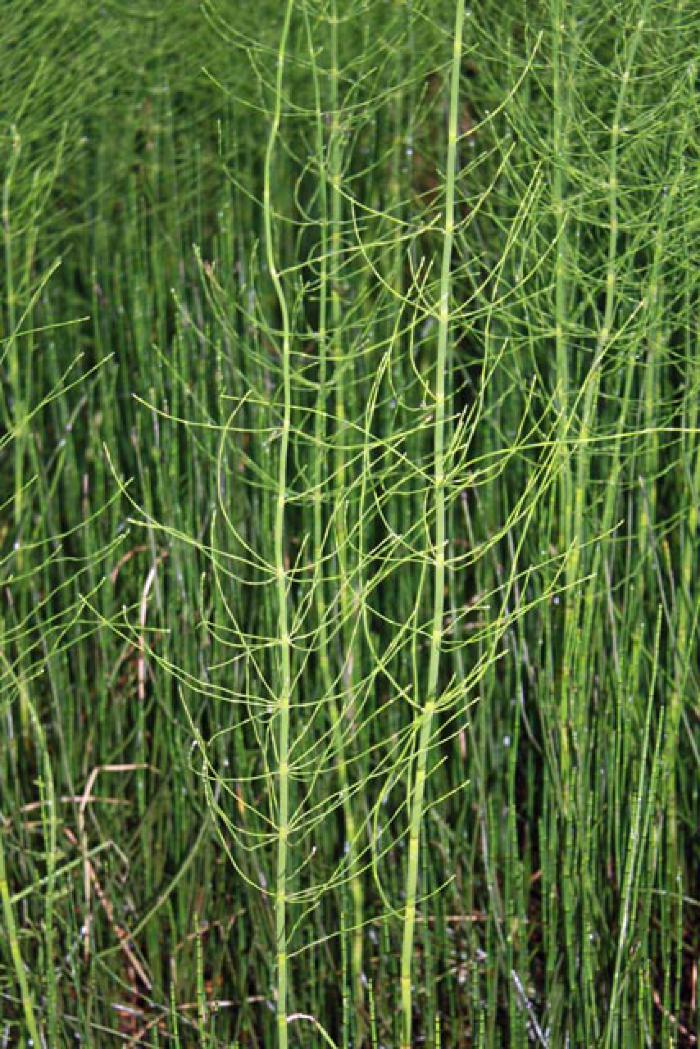Horsetail — Paumnaruaq, Naparuaqutaq

Horsetail (Equisetum spp.) is a small green herb that grows throughout the Pacific coast of Alaska. There are many different species of horsetail, some that thrive on land and others that prefer wet, marshy terrain. Some varieties have a thin stem and feathery branches that give it the appearance of a horse’s tail. Horsetail is one of the most widespread plants in the world and a common colonizer. It grows well in wet soils, preferring moist forests, damp meadows, swamps, stream banks, and recently disturbed areas.
Alutiiq people gather and eat the spring stage of this plant, collecting the brown, branchless shoots that begin to develop in mid-April. These thick, succulent shoots grow up to a foot tall and have small, cone-like tips known as strobili. These shoots look like an asparagus spear. After removing the brown covering on the shoot’s head, horsetail can be eaten raw, added to salads, or boiled to make a tender vegetable. In Kenai Peninsula communities, Alutiiq people often serve horsetail with seal oil.
People harvest horsetail until early June when the last sprouts develop. The plants then form tough green stems with feathery branches. Although the plant cannot be eaten in summer, a variety of Alaska Native groups harvest the summer stage for medicinal purposes. People use the silica-rich stalks to polish wooden objects, make a greenish-yellow dye from the mature stalks, and incorporate horsetail fibers into weaving. The plant’s tubers are also edible.
